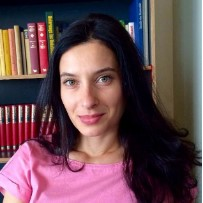Recent Advances in Wound Healing
A special issue of International Journal of Molecular Sciences (ISSN 1422-0067). This special issue belongs to the section "Molecular Biology".
Deadline for manuscript submissions: closed (25 March 2024) | Viewed by 7993
Special Issue Editors
Interests: microbiology; immunology; new antimicrobial agents; host–pathogen signaling; infection control; antimicrobial nanomaterials
Special Issues, Collections and Topics in MDPI journals
Special Issue Information
Dear Colleagues,
Wound healing represents one of the most complex processes in the body, subjecting organisms to many sequential stages: haemostasis, inflammation, proliferation, and remodelling. Many cells of the body (platelets, macrophages, neutrophils, fibroblasts, and epidermal cells) are involved in a very well-coordinated process. Any change in external or internal factors can disrupt the process, leading to the appearance of chronic wounds, resulting in incomplete healing, the recurrence of the infectious process, and a continuous need for treatment, meaning an overwhelming burden for both patients and medical systems. Due to the complexity of the process, a multidisciplinary approach to diagnoses and treatments is often required. Since many aspects of chronic wound healing are far from completely understood, this collection of papers aims to display the progress of researchers in the field as well as the data from clinicians regarding the pathophysiology of wounds (acute or chronic) to date, in addition to currently available modalities to achieve healing in such patients. Recent developments in the management of wound healing are also addressed, such as the following: new techniques of wound debridement, the development of topical antiseptics and antimicrobials for fighting against multidrug-resistant bacteria from chronic wound biofilms, the investigation of growth factors and other new biologic wound products, skin substitutes, interactive dressings, or tissue engineering techniques—stem cells and gene therapy.
Dr. Alina Maria Holban
Dr. Carmen Curutiu
Guest Editors
Manuscript Submission Information
Manuscripts should be submitted online at www.mdpi.com by registering and logging in to this website. Once you are registered, click here to go to the submission form. Manuscripts can be submitted until the deadline. All submissions that pass pre-check are peer-reviewed. Accepted papers will be published continuously in the journal (as soon as accepted) and will be listed together on the special issue website. Research articles, review articles as well as short communications are invited. For planned papers, a title and short abstract (about 100 words) can be sent to the Editorial Office for announcement on this website.
Submitted manuscripts should not have been published previously, nor be under consideration for publication elsewhere (except conference proceedings papers). All manuscripts are thoroughly refereed through a single-blind peer-review process. A guide for authors and other relevant information for submission of manuscripts is available on the Instructions for Authors page. International Journal of Molecular Sciences is an international peer-reviewed open access semimonthly journal published by MDPI.
Please visit the Instructions for Authors page before submitting a manuscript. There is an Article Processing Charge (APC) for publication in this open access journal. For details about the APC please see here. Submitted papers should be well formatted and use good English. Authors may use MDPI's English editing service prior to publication or during author revisions.
Keywords
- management of wounds
- nanobiomaterials
- infection control
- chronic wound
- biofilm infections
- wound dressings
- tissue engineering
- wound healing







